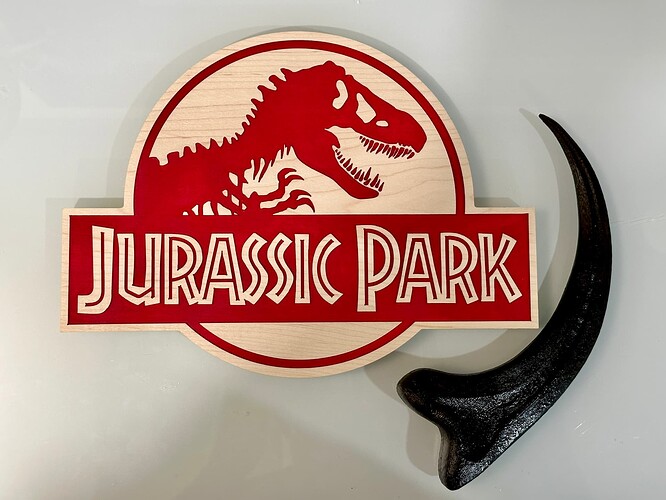While I hardly feel worthy after seeing the above work (amazing!!!) I figured why not share some of the gifts I’ve been making.
Here is the first one, a gift for my mother, who loves everything Jurassic Park. I 3D printed the raptor claw, so of course ignore that!
I setup the artwork in Adobe Illustrator, exported the SVG and cut from hard maple on my Shapeoko 4 XL, with acrylic paint. I used oramask for easy sharp lines and then sanded the surface a bit.
